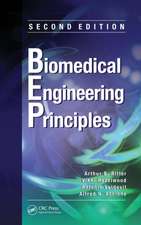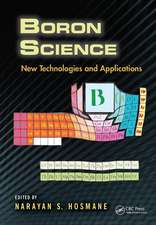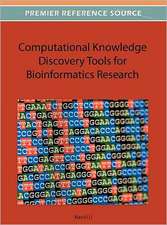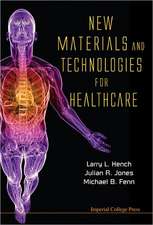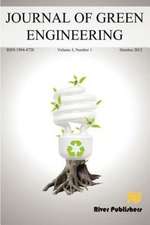Regenerative Engineering and Developmental Biology: Principles and Applications: CRC Press Series In Regenerative Engineering
Editat de David M. Gardineren Limba Engleză Paperback – 12 dec 2019
| Toate formatele și edițiile | Preț | Express |
|---|---|---|
| Paperback (1) | 499.16 lei 6-8 săpt. | |
| CRC Press – 12 dec 2019 | 499.16 lei 6-8 săpt. | |
| Hardback (1) | 1312.26 lei 6-8 săpt. | |
| CRC Press – sep 2017 | 1312.26 lei 6-8 săpt. |
Preț: 499.16 lei
Preț vechi: 658.38 lei
-24% Nou
Puncte Express: 749
Preț estimativ în valută:
95.51€ • 99.53$ • 79.09£
95.51€ • 99.53$ • 79.09£
Carte tipărită la comandă
Livrare economică 03-17 aprilie
Preluare comenzi: 021 569.72.76
Specificații
ISBN-13: 9780367873097
ISBN-10: 0367873095
Pagini: 646
Dimensiuni: 178 x 254 mm
Greutate: 1.2 kg
Ediția:1
Editura: CRC Press
Colecția CRC Press
Seria CRC Press Series In Regenerative Engineering
ISBN-10: 0367873095
Pagini: 646
Dimensiuni: 178 x 254 mm
Greutate: 1.2 kg
Ediția:1
Editura: CRC Press
Colecția CRC Press
Seria CRC Press Series In Regenerative Engineering
Cuprins
Introduction. Overview of principles of regeneration and development. What cells can do. Cellular proliferation. Cell migration. Regulation of differentiation and dedifferentiation. Epigenetics and the regulation of dedifferentiation. Signals associated with injuries that initiate regeneration. Wound healing—Basic review. Role of nerves—Neuro-epithelial interactions in salamander regeneration. Role of nerves—Neuro-epithelial interactions in mammalian development and regeneration. Inflammation and the role of the immune response. Bioelectricity. Regulation by the microenvironment and cell physiology. How cells remake the pattern and restore the function. Cellular contribution to regeneration. Morphogenesis—how the cells make structure. The information in the system that controls morphogenesis—the information grid. Information encoded by morphogens and growth factor signaling. Cell-Cell signaling. Regulation of positional information by the ECM and the spatial/temporal regulation of growth factor signaling. How to engineer regeneration using principles of regeneration and developmental biology. Organoids—Engineering a tooth. Neural regeneration. Heart regeneration. Skin regeneration and fibrosis—Learning how to talk to fibroblasts.
Notă biografică
David M. Gardiner is a professor in the Department of Developmental and Cell Biology at the University of California Irvine. He received his BA in Biology from Occidental College, his Ph.D. from the Scripps Institution of Oceanography at UCSD, and postdoctoral training at UC Davis. His research has been focused discovering the mechanisms regulating limb regeneration in salamanders. He pioneered the use of the axolotl (Ambystoma mexicanum) as a model system for studies of vertebrate regeneration, and developed the Accessory Limb Model as an assay for bioactive compounds that induce dedifferentiation, blastema formation and limb regeneration. This novel assay is the basis for ongoing studies to identify molecular pathways that regulate regeneration in humans. Professor Gardiner is a Fellow of the American Association for the Advancement of Science, a recipient of the Marcus Singer Medal for Excellence in Regeneration Research, and a recipient of the Frontiers in Stem Cell and Regeneration Biology Pioneer Award. He is an author on more than 100 articles, and has served on numerous peer review committees, journal editorial boards, and scientific advisory boards. At UCI he serves as the Associate Dean for Research and Academic Affairs for the Francisco J. Ayala School of Biological Sciences.
Recenzii
"I strongly recommend that engineering- and medical-oriented people, as well as young generations who are interested in the future of regenerative medicine, should read this book."
— Kiyokazu Agata, Gakushuin University, Tokyo, Japan
"The book presents an outstanding collection of thought-provoking chapters that will accomplish the goal of bringing developmental biologists and tissue engineers closer together. This will certainly be a welcome addition to my book shelf."
—Randal Voss, University of Kentucky, USA
— Kiyokazu Agata, Gakushuin University, Tokyo, Japan
"The book presents an outstanding collection of thought-provoking chapters that will accomplish the goal of bringing developmental biologists and tissue engineers closer together. This will certainly be a welcome addition to my book shelf."
—Randal Voss, University of Kentucky, USA
Descriere
This cutting-edge comprehensive reference work details the technologies related to cell structure in the regeneration of tissue and organs.




